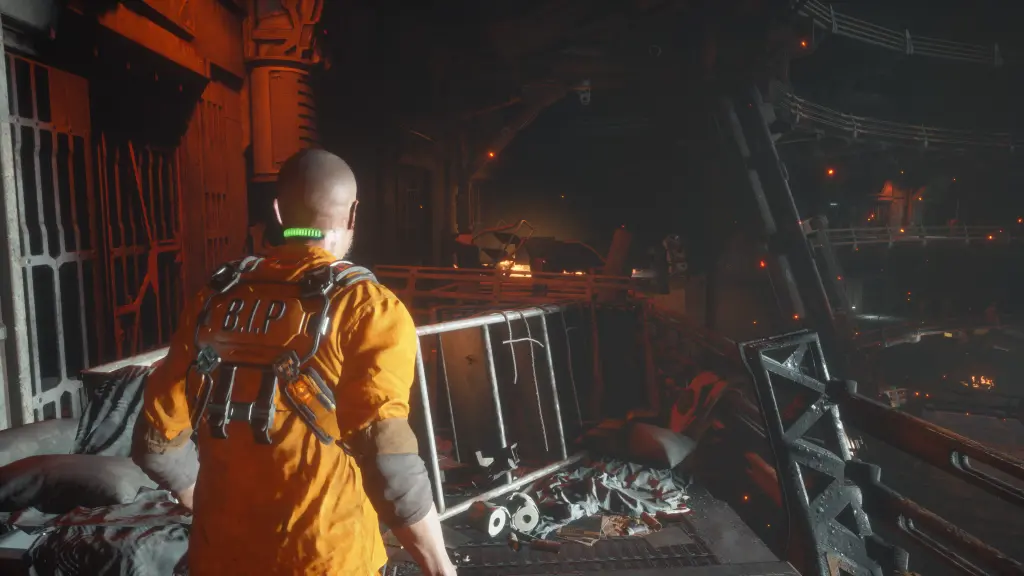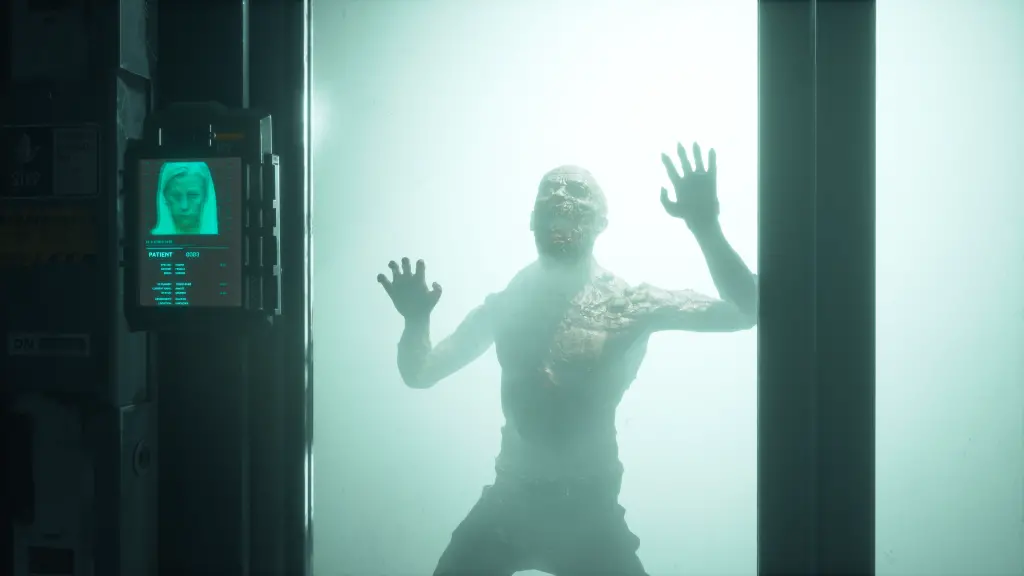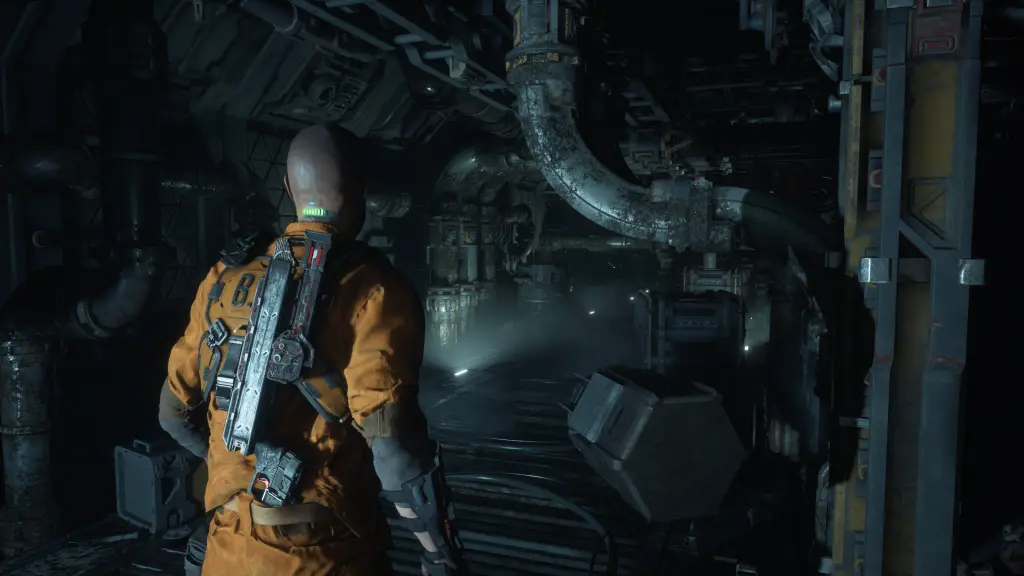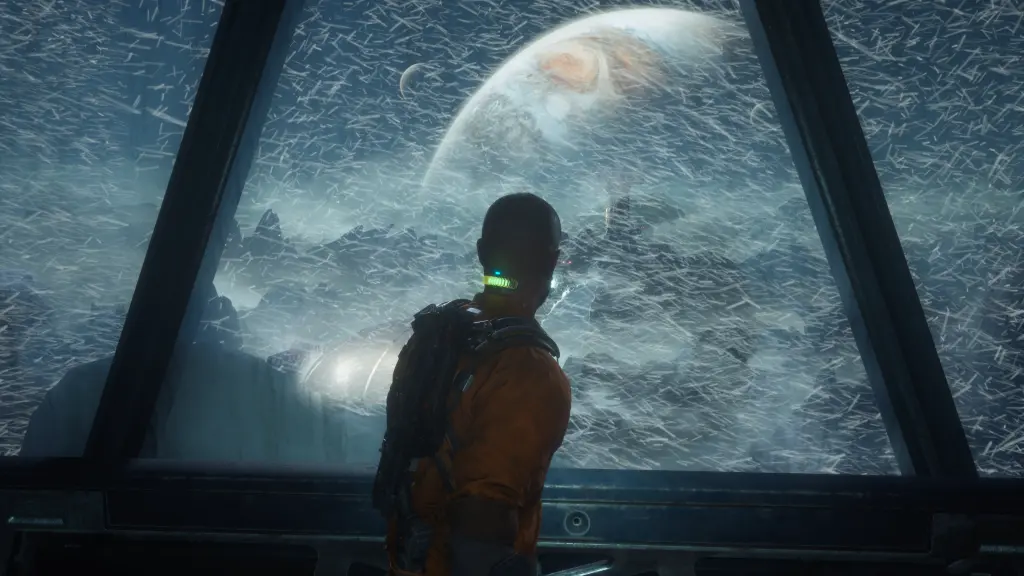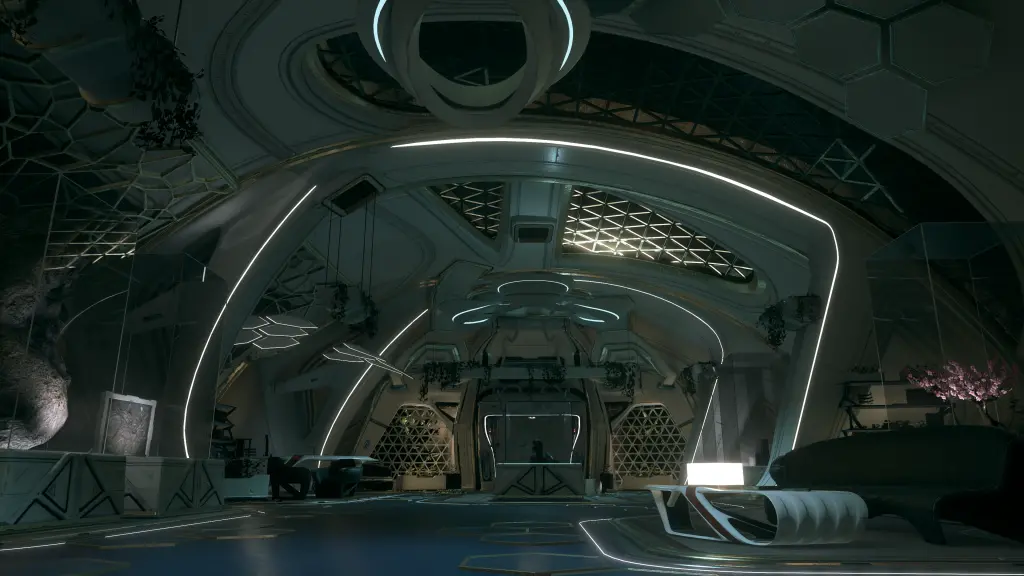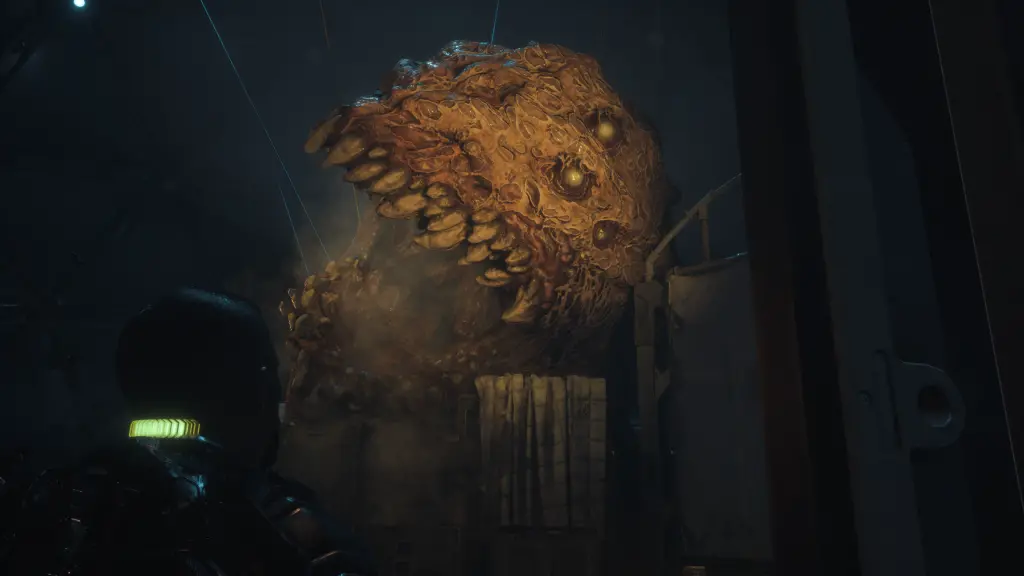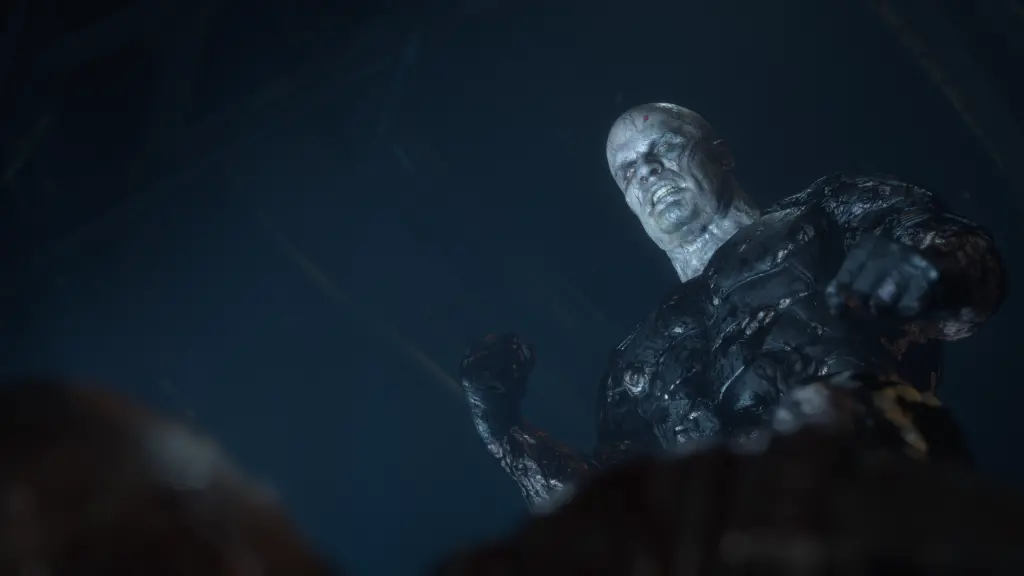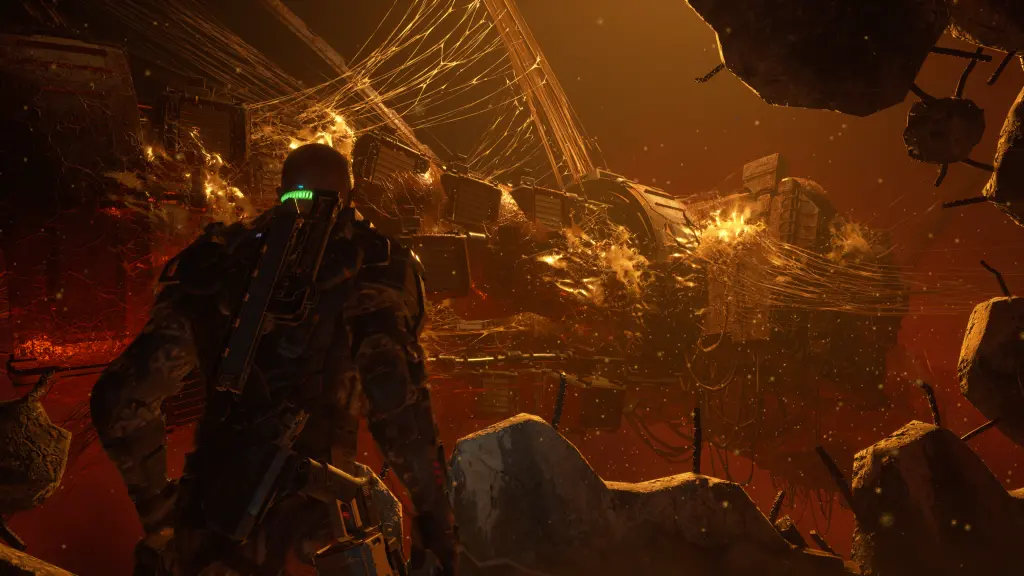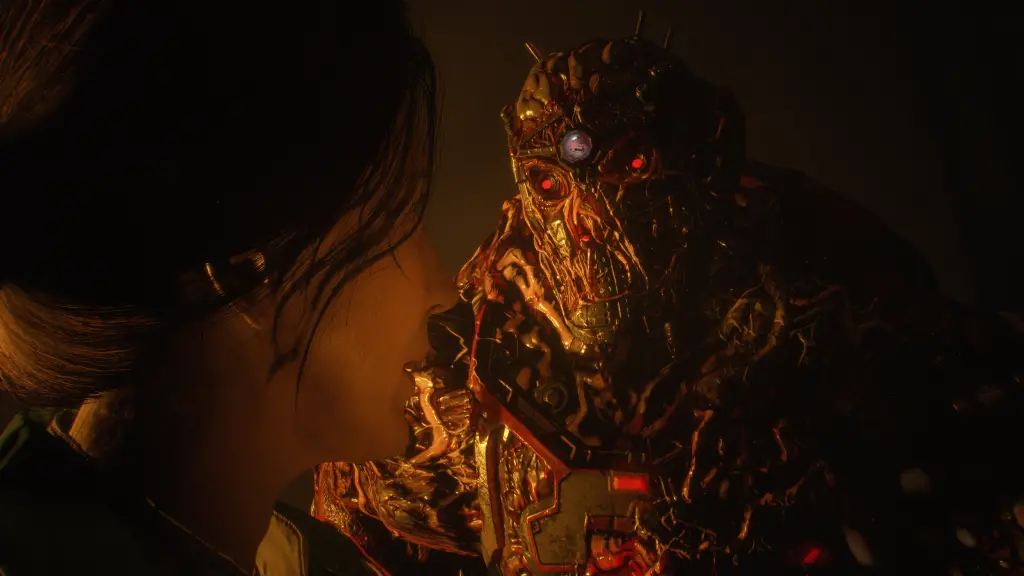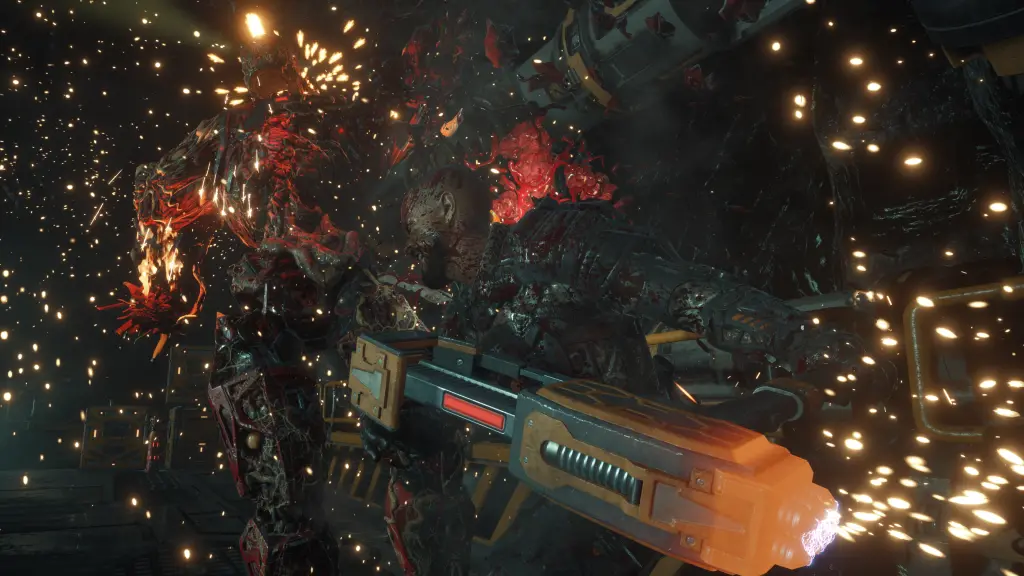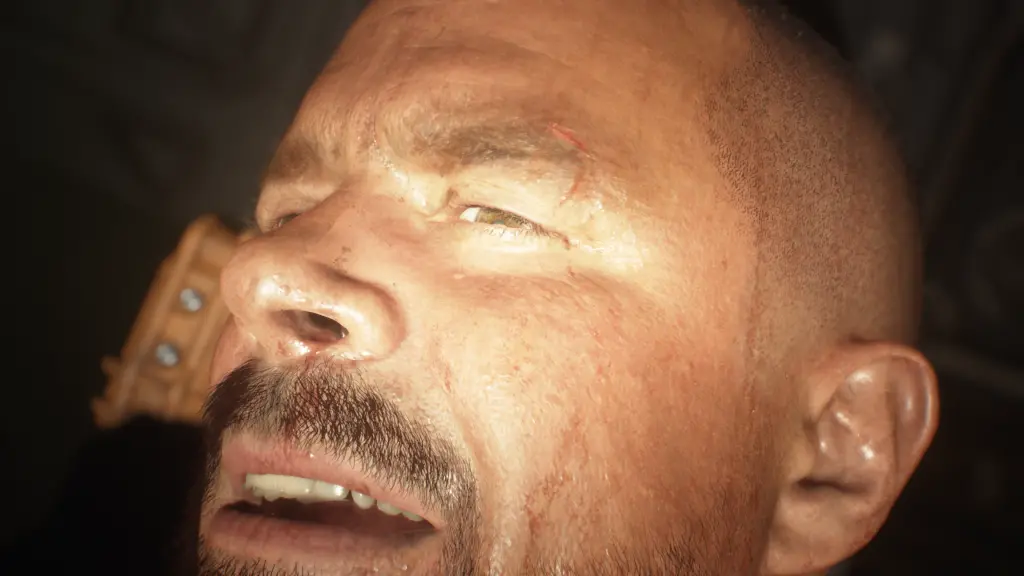You are a space trucker on your last mission before retirement. You're carrying some medical supplies from the prison on Callisto to Europa, both moons of Jupiter. But, shit goes wrong when terrorists responsible for a biological attack on Europa board your ship, attack you, and ultimately send your vessel back into Callisto's atmosphere, and crash on the surface.
You survive the crash, but your copilot is dead. All members of the terror group are dead, except one. As the moon's guards discover the crash and find you, both of you are taken to the prison.
Things get even worse when the pathogen from the biological attack spreads in the prison mutating many of the inmates into deranged violent abominations. The prison begins the fall apart allowing you to mount an escape.
This is how the story of Callisto Protocol begins. You are Jacob Lee, who's just a normal dude put into extreme circumstances. On the surface, it seems like a pretty standard action adventure game with an involved story and twists here and there. But, this game ends up living in the shadow of another, which dominates the conversation.
As much as Callisto Protocol may want to stand on its own, it's hard to talk about it without talking about Dead Space. Callisto Protocol comes from one of the original creators of Dead Space, and has some members of the old team, too. Callisto tries its best to emulate what made Dead Space so great, but fails on almost every front. It takes some cues from Last of Us as well, but it feels like a rip-off.
Oh, we be fighting zombies again.
Both Dead Space and Last of Us have zombies and while the high points of both those games go far behind their enemy designs, the enemies are still interesting. The necromorphs in Dead Space had a very dynamic design that supported the combat. The infected in Last of Us were detailed enough that you could see how the fungal infection grew and mutated their bodies.
Yep, that's a zombie. In Callisto, the biophages just look like dudes with skin problems. Later, you fight some others that look like Clickers from Last of Us. And then you fight deaf zombies EXACTLY like Clickers from Last of Us.
One departure from Dead Space is that Callisto isn't a shooter first, but a brawler. You bob and weave incoming attacks and counter with a melee weapon, so it makes sense the zombies are more like crazed humans. But now we're doing Arkham Batman combat, and Arkham Batman combat was not this stiff. Batman combat was designed around fighting multiple enemies at once, and you could react to them working together.
Callisto often struggles with this. Every attack has weight to it, but that weight often pushes you into a position you don't want. Other enemies then attack or you get stuck in a corner looking the wrong direction. It hard to tell where enemies are coming from if they aren't in front of you. Jacob isn't nimble enough to run around and take out enemies, so you always have to focus on them one-at-a-time, which slows down the game.
And you're already moving pretty slow. In Dead Space, Isaac's slow movement made sense because you're moving around in a 200lbs suit meant for protection from environmental and occupational hazards. You're like a tank. In Callisto, you're only wearing a cloth prison jump suit. Jacob isn't some huge muscle dude, either. He looks like he could sprint down a hall way and slip past a group of people. Later, you get an EVA suit, but it looks flexible enough to move easy.
One of the key points of Dead Space was its immersive environment supported by the heavy futuristic machinery, dynamic lighting and color, and a sharp distinct and unique set of sounds that overwhelmed you. Incorporating all of the HUD and UI elements into the character and environment made you feel immersed in the world.
Last of Us had a similar approach. There were still some UI elements that assisted the player through exploration and combat, but the lack of music and use of silence matched with the vibrant lush overgrown environments which immersed me in the exploration of Seattle and listening for the subtle movements of enemies around blind corners.
Both games felt designed around the opportunity to give creative people a chance to make the most of their opportunities, and create dynamic and memorable experiences.
Callisto has some unique areas, but the first half of the game is moving through drab metal hallways and then the prison's sewer system. Lots of pipes and moving through vents. The arboretum is a nice area, but it's dark and muddy. Later, you visit an old mining area. The density of buildings and their layout is interesting, but the buildings themselves aren't very interesting. The environments are definitely detailed, but they don't really inspire creativity in me. It feels too restrictive.
Perhaps the biggest flop of Callisto is its lack of dynamic sound. There's no unique sound of heavy machinery working. There's no sharp crack of gun fire or welding tools. There's no use of silence to accent the enemies movements. And overall, the music is pretty generic and used too frequently. There are no surprises or memorable experiences through sound, which dampens the overall experience.
Thankfully, the monotony is broken up by breaking out onto the surface of Callisto. You put on an EVA and are shot out into the environment.
The snow is pushed around by your foot steps and moving gates. While trying to find your way to the space depot, the blizzard often overwhelms your vision. At least now, Jacob's slow lumbering movements make sense. If Jacob could move faster or more dynamically, I would've loved to stay outside longer, but everything just seems to weigh down the experience that I want to move on to the next section as quick as possible.
In the end, we get another unique area, the clean living area of the administration.
The game could've used more unique areas like this. But, we're in a prison and we're climbing through sewers and mines. There aren't many opportunities to have fantastical elements while making the setting down-to-earth. Perhaps Callisto Protocol tries to bring too much reality to its setting. As a result, all of the edges feel sanded off.
Through attempting to escape, you journey into the depths of Callisto to an abandoned mining colony from 75 years ago, and discover the truth of the biophage outbreak. Can you guess?
Oh, it turns out the government was behind the biophage attack on Europa, not the terrorists. And the terrorists were people caught up in the attack who blamed the government. The reason you were caught up in everything, too, was because the medical supplies you transported to Europa were hiding the viral agent that started the outbreak.
75 years ago, the first outbreak occurred in this mining colony as the scientists responsible for the biophage tested their progress. Once the outbreak was concealed, the prison was built on top of it to continue testing the biophage virus on inmates.
It was aliens all along. The miners had discovered the corpse of a massive alien and studied its secrets. The government agency funding this science believed the larvae of the alien could help human ascend to the next level of evolution allowing them to expand within the universe further. The biophage virus was the result of their research, and injecting humans was meant to make them impervious to the harsh environment of space. But, whatdya know, it just turned them into monsters.
The Callisto Protocol is the development of this biophage to push humanity to the next level of evolution, and its eventually release and conversion of all humanity.
They got pretty close making an evolved human with this guy. But eventually he also turns into a mindless monster and you gotta shoot him in the face anyway. With their prime experiment defeated, the government (actually a crazed religious group) sets the prison to self-destruct. With only one escape pod available, you shove your friend into it and she escapes along with records of the event and a sample of the virus.
You are still stuck on the planet and the game ends as the monster jumps at you. No real ending, just a few words and cut to black.
In the $15 DLC, the story continues. You wake up with the doctor speaking to your through an earpiece. Get up! There are more secrets to be had! You travel to her lab and her hologram explains about the further experiments and atrocities. There was a competing experiment being held to push humans to the next stage of evolution. And you find out that the doctor led the project.
You stumble further down into her lab into far more interesting, detailed, and amazing looking areas than the main game. Areas use a lot of orange light to break away from the boring metal blue walls and floors. Bio-matter spreads and grows from the walls transforming it into an alien or infested looking environment.
It is often difficult to tell whether something is going to come out of the wall to get you, or whether danger is just around the corner. The terrible "mood" music and jump scares are turned down and used in actual appropriate moments compared to the main game.
Sanity effects are now used, too, as it feels like Jacob is slowing falling apart mentally. You open up a treasure chest to receive nothing, and turn around to find the chest in front of you again, but unopened. You move down a hallway as enemies continuously attack you, not realizing the path forward is to turn around.
Something new appears in the depths of the labs.
The prison bots from before have been infected and fused with bio-matter making them stronger and more aggressive than before. It's still not too difficult to dodge out of the way and slam them with your electrified police baton, though.
However, as you enter the laboratory in the police bot factory, your baton is destroyed after beating a bot over and over again to its death. Your main weapon used throughout the entire game and a fundamental staple of how the game play works is removed from your arsenal. You can no longer easily dodge and counter enemies. The brawler has turned into a clumsy shooter.
It's not long before you are chased into a test room with bots closing in on all of your sides when you obtain the best funnest weapon in the game.
The hammer replaces your police baton and smashes through bots after a few hits. Zombies from before are cut through like butter. Up until this point, the whole game felt like you're fighting against the gameplay. Eventually you find a rhythm that works, but it ends up becoming a single use solution to every encounter. Now you feel incredible and powerful by slicing and smashing through everything that sucked about the game before.
As mentioned earlier, the Callisto Protocol is the development of the biophage to push humanity into the next stage of evolution. Their main plan ended up turning people into zombie monsters.
The doctor had a different idea and tried to compete with them. The doctor created these bio-bots as her solution to humanity's evolution. The bots were fused with human skin, muscles, and brain using the alien biophage material. Human consciousness was then uploaded into the bots for humanity to live on forever.
It didn't work. Just like the zombies, the bots became mindless machines of destruction and ripped apart anything that was human, relying too much on the prison's programming.
The doctor had been luring you further into the depths of the lab to reach an escape pod she had prepared for herself. As you arrive near the hatch, the doctor is grabbed by a robot. The bot infects and mutates the doctor into an abomination that you juke, jive, and smash until it's dead. With the doctor's voice still in your ear, you proceed to the escape pod.
The escape pod is your ship, though. It's your destroyed ship that crashed into Callisto in the beginning. The doctor directs you to hop on the controls and get out of there. You escape the prison, escape the moon. You continue to fly as far away as fast as you can. And space begins to light up. The light gets brighter and brighter to point where you can't see anything but white.
It's done. You're done. You're dead. You've been dead this whole time.
As your friend had escaped earlier with all the lab's data, you were killed as the enemies closed in. The doctor found your body, and ignited the few remaining sparks in your brain. The doctor used the implant in your head linked to your friend in order to send the remaining data she had exposing the government's horrific projects on Callisto, and her involvement in the project.
It felt like the DLC was going to give some full closure to the ending. And I suppose it did. Callisto Protocol no longer ends on a cliffhanger. But, it's not a happy ending and it completely closes the book on Jacob's story.
Most people feel cheated by the ending, and further cheated by paying $15 to get an ending that punches them in the face.
The publisher ultimately is to blame for the abrupt ending and pay-per-view ending. Krafton cut the development time towards the end of the project and forced the release date ahead of schedule. New enemy types were scrapped from the game, and the ending had to be reworked into what we got. It's pretty obvious that some of those scrapped ideas were remolded into the DLC ending.
It's poetic and perhaps intentional that the final scene is of Jacob's horrific torn-apart corpse, a signal from the developer that there is no future for this game, and a metaphor of what the developers perhaps consider the result of their ideas and hard work after the publisher forced their hand.
It sucks even more that after the release of the DLC, the developer laid off employees as the publisher realigned the focus of the studio.
I think it's easy to say Callisto Protocol is kinda lame and not all that great, but I think the DLC shows that this game and its developer had the potential to make something better and more compelling than what we got. Not everyone gets a blank check, though. And very few publishers want to take a risk. Everything has to be a financial hit these days. There's no longer any room for mediocrity even if it has some kernels of something good.
Anyways, I'm glad I played it.
